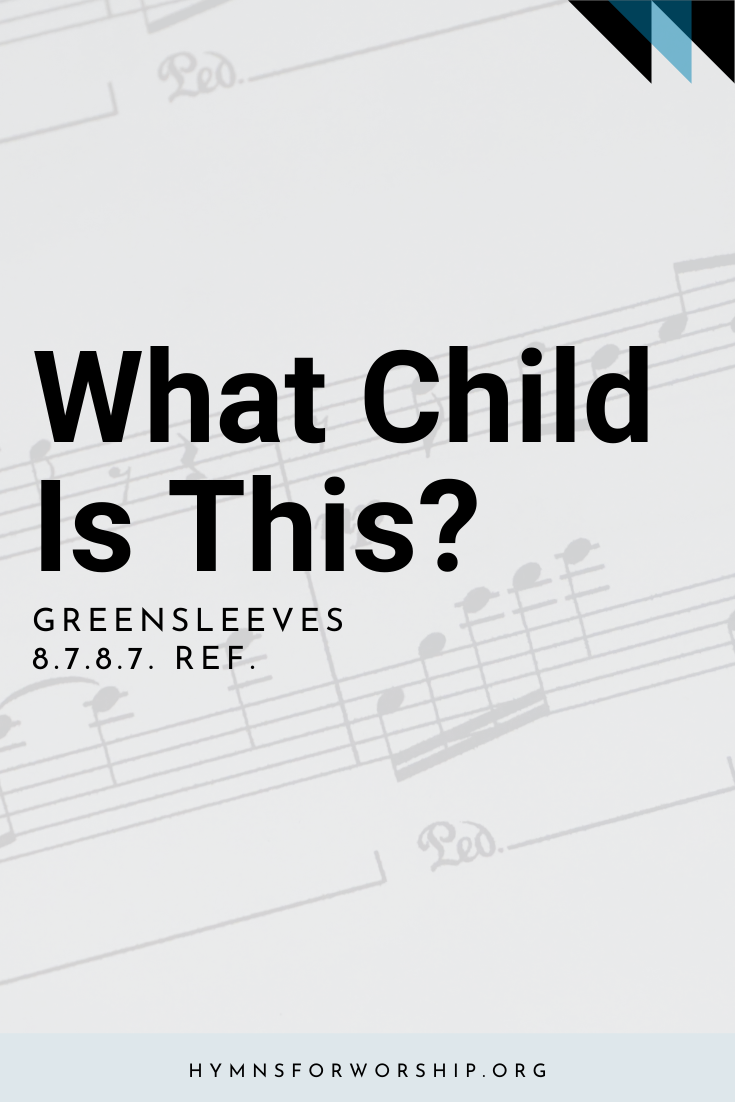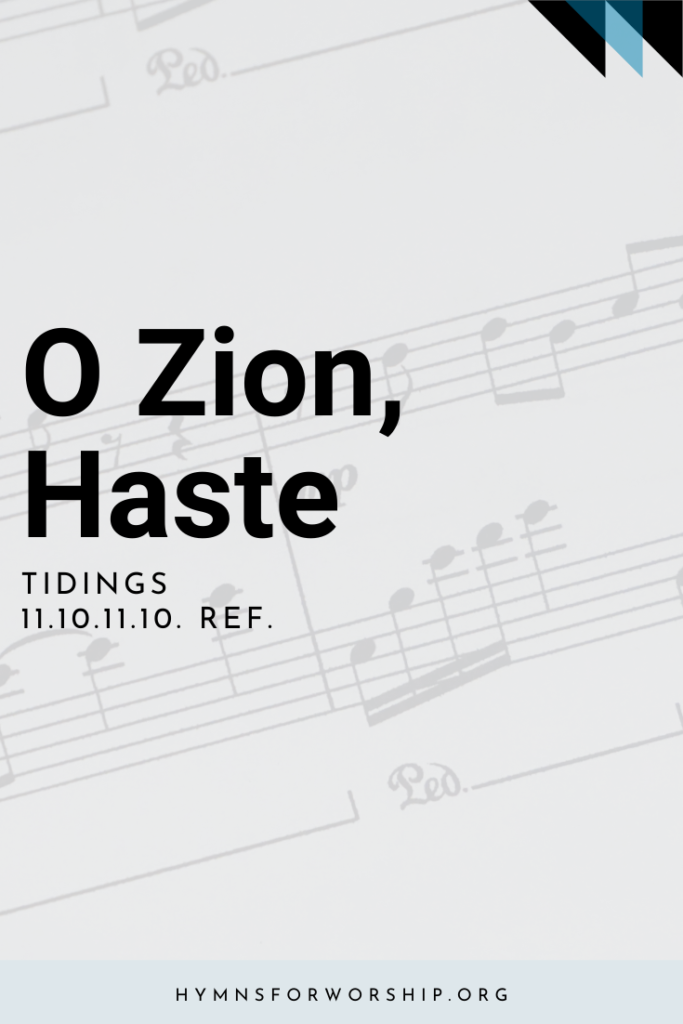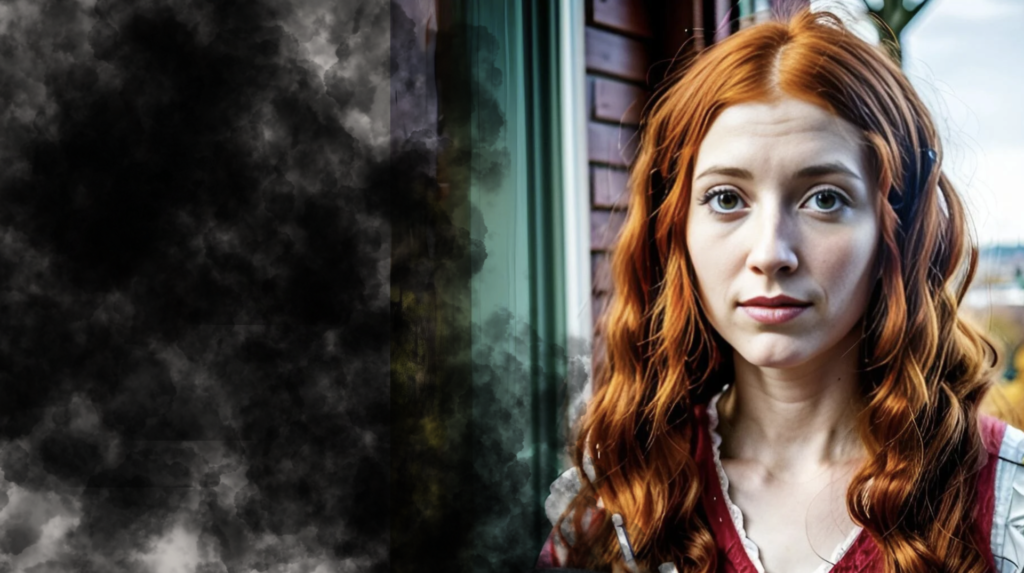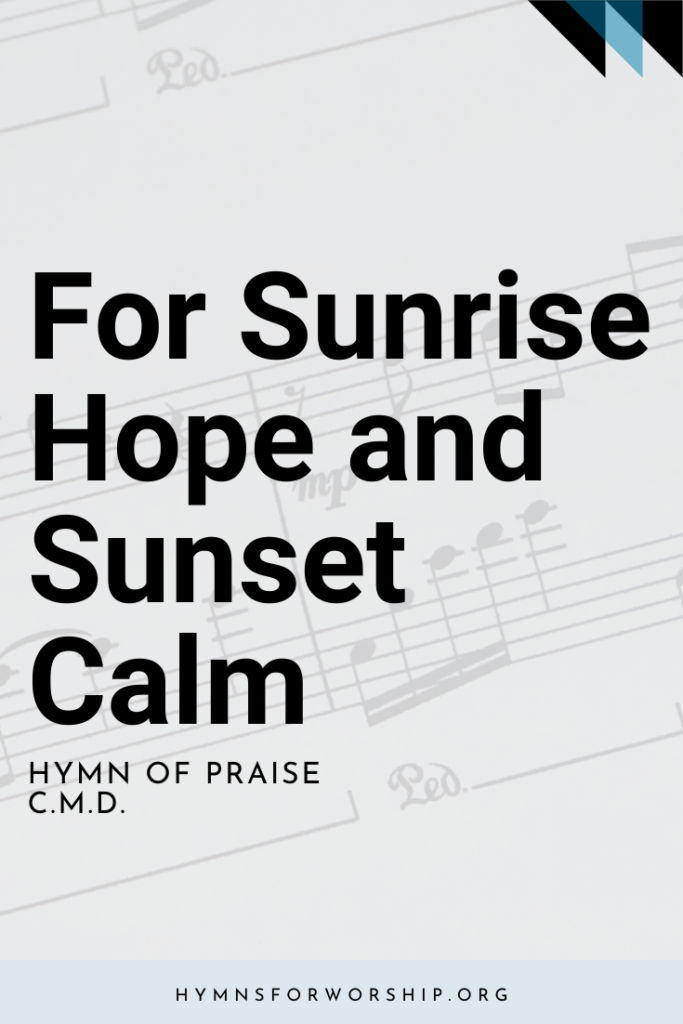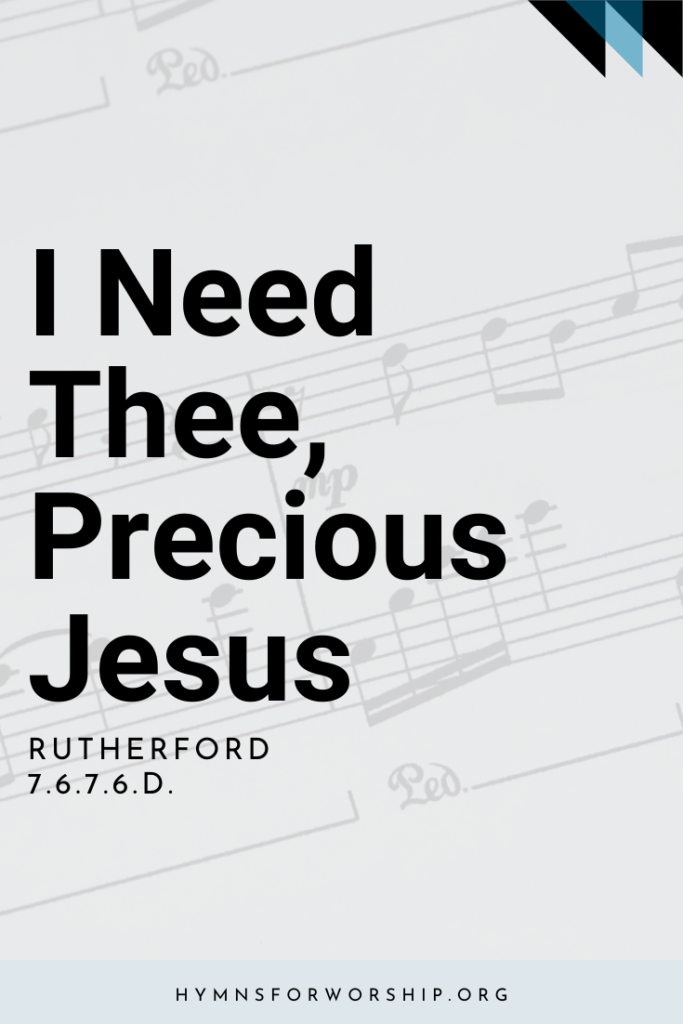JESUS CHRIST >> Birth
SDAH 141
What child is this, who, laid to rest,
On Mary`s lap is sleeping?
Whom angels greet with anthems sweet,
While shepherds watch are keeping?
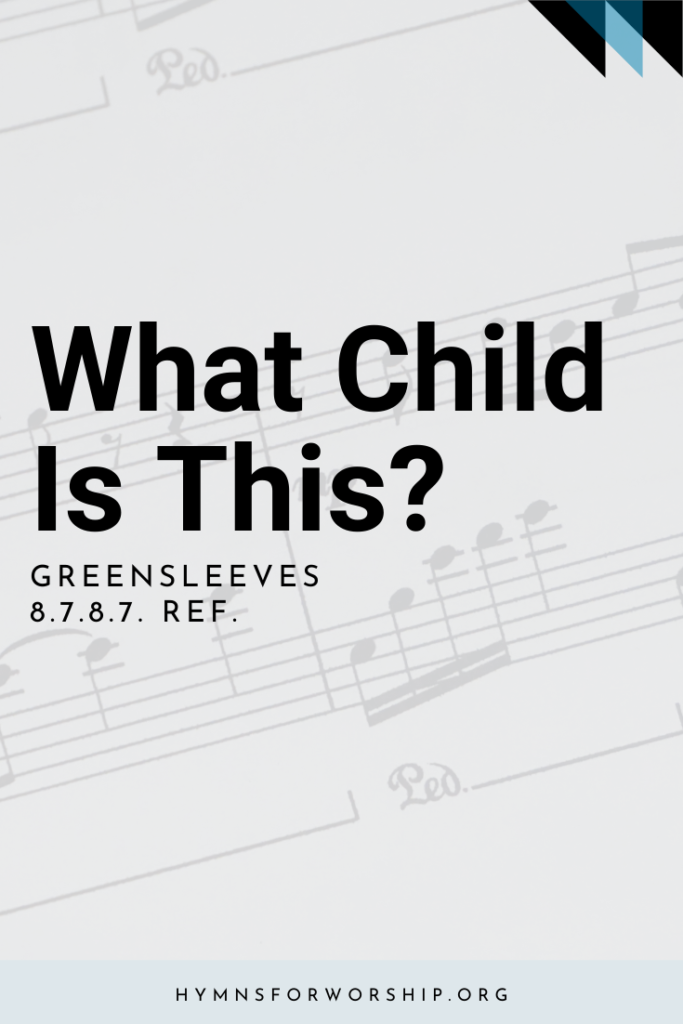

Text
1
What child is this, who, laid to rest,
On Mary`s lap is sleeping?
Whom angels greet with anthems sweet,
While shepherds watch are keeping?
Refrain
This, this is Christ the King,
Whom shepherds guard and angels sing:
Haste, haste to bring Him laud,
The babe, the son of Mary.
2
Why lies He in such mean estate
Where ox and ass are feeding?
Good Christian, fear: for sinners here
The silent Word is pleading.
3
So bring Him incense, gold, and myrrh,
Come, peasant, king, to own Him,
The King of kings salvation brings,
Let loving hearts enthrone Him.

Hymn Info
Biblical Reference
(a) Luke 2:5, 7, 13 (b) John 1:14 (c) Matt 2:12
Author
William C. Dix (1837-1898)
Year Published
c. 1865
Hymn Tune
GREENSLEEVES
Metrical Number
8.7.8.7.Ref.
Tune Source
English Folk Melody
Theme
BIRTH OF JESUS CHRIST
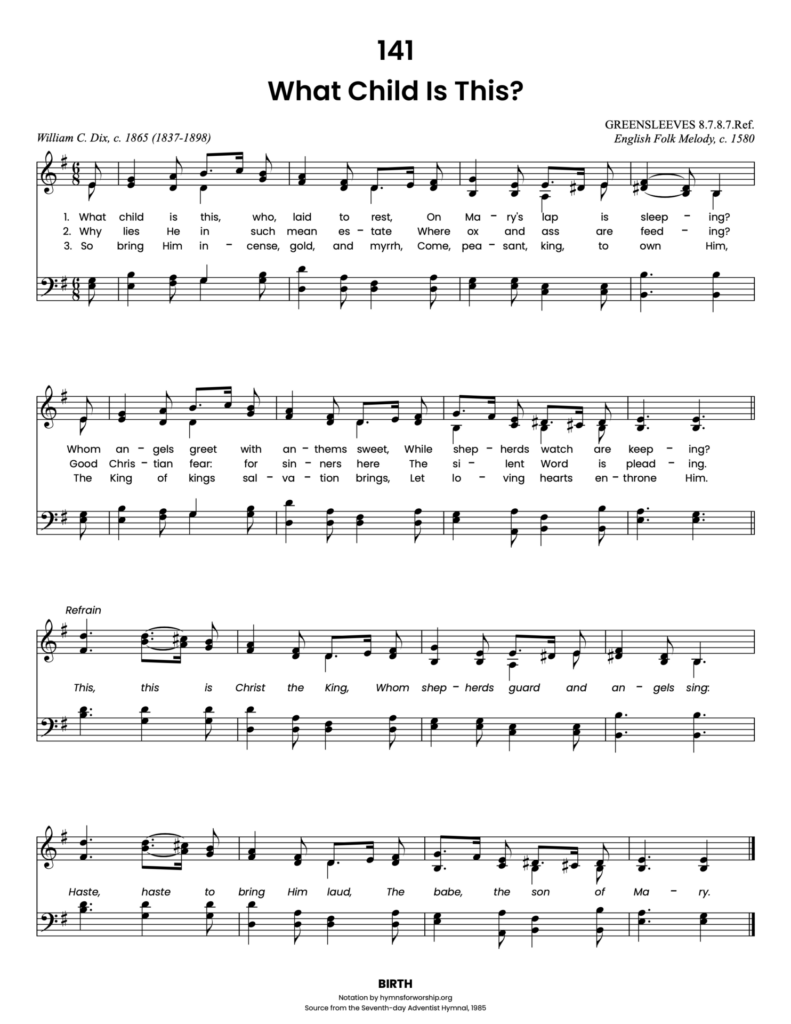
Get the hymn sheet in other keys here
For Worship Leaders
Make each hymn more meaningful with these helpful tools: Short, ready-to-use hymn introductions for church bulletins, multiple ways to introduce a hymn based on your worship theme and in-depth history and insights to enrich your song service.

Notes
Make each hymn more meaningful with these helpful tools: Short, ready-to-use hymn introductions for church bulletins, multiple ways to introduce a hymn based on your worship theme and in-depth history and insights to enrich your song service.

